In October, the Russian army lost more tanks on the battlefield in Ukraine than in any other month since Russia’s all-out war against Ukraine began in February 2022.
According to the data provided by the General Staff of Ukraine’s Armed Forces, Russian tank losses skyrocketed once Russia mounted a massive onslaught near Avdiivka in the Donetsk Oblast on 10 October 2022. This month alone, Ukraine’s Armed Forces destroyed or damaged 443 Russian tanks (while the average rate of losses is about 245 Russian artillery systems per month), according to the data provided by Ukraine’s General Staff.
According to the Colonel of Ukraine’s Armed Forces, Oleksandr Shtupun, the Russian army has lost 400 armored vehicles in fighting near Avdiivka and Mariinka since 10 October. Satellite imagery confirms the destruction of at least 109 Russian military vehicles, mostly armored fighting vehicles and tanks.
Significantly increased Russian tank losses on the battlefield during the Avdiivka offensive are confirmed by several independent OSINT analysts, such as Oryx, a Dutch open-source intelligence monitoring group that documents Ukrainian and Russian military equipment losses based on photo and videographic evidence. Russian losses far exceed the rate of tank production and repair.
Russia’s pre-war tank potential
Russian all-out war against Ukraine requires a massive amount of resources, from artillery systems and ammunition to armored vehicles and tanks. Russia is unable to produce enough military equipment to keep up with the high intensity of the attritional war against Ukraine. Thus, to compensate for heavy losses on the battlefield, Russia must remove Soviet-era equipment from storage bases. However, even enormous Soviet stockpiles of armor are not infinite.
According to Ukraine’s General Staff, since the beginning of the full-scale Russian invasion of Ukraine in February 2022, Russia has lost over 5,000 tanks (as of 27 October 2023). With such a high level of tank losses, Russia may have less than 2,000 tanks left by the end of next year, according to the most conservative estimates.
In September 2023, the Institute Action Resilience (IAR), the French research institution, published a report on the armored potential of the Russian army. According to the IAR’s estimates, as of February 2022, the Russian army had 7,000 tanks of all types in storage bases, with Soviet-era T-72 main battle tanks (of all modifications) predominating.
The IAR’s estimates are confirmed by satellite imagery of all 22 tank storage bases in Russia (taken between April and November 2021 and February 2022). Such data refuted the estimates of the International Institute for Strategic Studies (IISS), according to which Russia could have up to 17,500 tanks in reserve before the full-scale Russian invasion began on 24 February 2022.
According to the IAR, the Russian army could have over 17,000 tanks at its disposal only if Russia had inherited all the tanks from the Soviet Union (USSR), which is not the case. After the collapse of the USSR, the Kazakh, Belarusian, and Ukrainian armies have inherited a significant number of Soviet tanks, according to the IAR’s estimates.
Therefore, for a more accurate assessment, the IAR relied on satellite images to determine how many tanks Russia may have. The IAR’s experts subtracted tanks with turrets or other structural elements being dismantled. Such tanks can hardly be restored. According to IAR, out of 7,000 tanks stationed at 22 storage bases all over Russia, over 5,000 tanks were stored in ten storage bases.
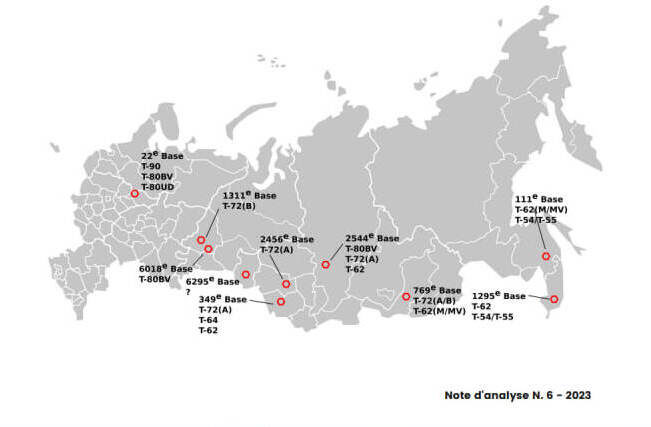
Map by IAR.
Several modifications of Soviet-era tanks have been stored in the open all over Russia for decades. According to the IAR, 5,400 tanks can be decommissioned and possibly restored. Based on satellite imagery, there were 2,055 T-72 tanks of all modifications, 1,009 unidentified tanks, 1,512 T-62 tanks, and 466 T-54/T-55 tanks in storage at storage bases across Russia in 2021.
Before the full-scale invasion of Ukraine, Russia also had thousands of T-80 tanks in storage (which are the most widespread main battle tanks used by the Russian army during the all-out war against of Ukraine), according to Visyskovyi Vishchun, the Ukrainian OSINT monitoring group. The estimates are based solely on satellite imagery. In total, the researchers identified 750 T-80 tanks at the largest storage bases, where about 95% of all equipment in storage in Russia is located.
Depletion of Russian tank reserves
The Russian army is running out of its most used tanks rapidly, namely T-80 main battle tanks, due to heavy losses in Ukraine.
According to the Military Balance, Russia had about 3,000 T-80 main battle tanks in storage as of 2021, a year before the full-scale invasion of Ukraine began.
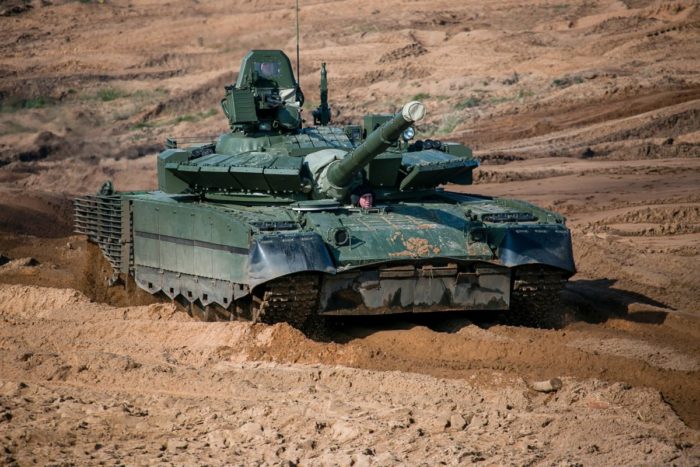
Credit: mil.ru
All Russian T-80 tanks are located at three storage bases:
- the 22nd storage base;
- the 111th storage base;
- military base no. 6018
As of 2021, there were at least 730 main battle tanks of various modifications at the 22nd storage base, 422 tanks at the 111th storage base, and 158 tanks at the military base no. 6018.
It was almost impossible to determine the model of tanks located at the 22nd storage base based on satellite imagery. However, photographs from the storage sites of the 22nd base posted by Russian soldiers on social media allowed OSINT experts to determine models of certain tanks. Approximately 80% of the tanks at the 22nd storage base are T-80 main battle tanks (around 570-600 T-80 tanks spotted at three Russian storage bases as of 2021).
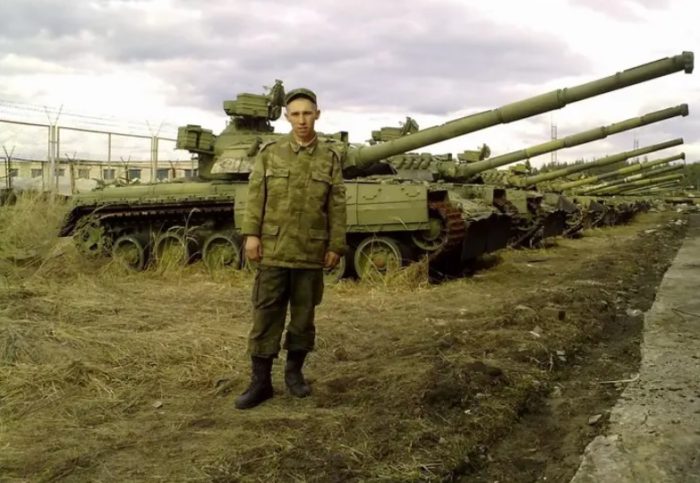
Credit: Viyskovyi Vishchun.
In July 2023, there were around 470 T-80 main battle tanks left at the 22nd storage base. The rest of the tanks were allegedly decommissioned (around 260 tanks). In October 2023, almost all T-80 main battle tanks were removed from storage at the 22nd base, according to Visyskovyi Vishchun.
According to IAR, before the Russian all-out war against Ukraine began, 422 T-80 main battle tanks of various modifications were stored at the 111th base. However, around 60 tanks were dismantled for spare parts in 2021-2022, the Viyskovyi Vishchun reported.

Credit: Viyskovyi Vishchun.
As of 2023, there were about 50 T-80B/BV tanks left at the 111th storage base in poor technical condition, according to the Viyskovyi Vishchun.
According to IAR, out of 158 T-80 tanks stored at the Russian storage base no. 6018 in 2021, only 20-30 tanks remain at the base as of October 2023. Almost all of them have been removed from storage. However, since most of the tanks are covered, it is difficult to confirm that those are T-80 tanks.
Around 320-410 T-80 main battle tanks remain at Russian storage bases as of October 2023. Not all the tanks taken out of storage were immediately sent to Ukraine, according to the Viyskovyi Vishchun.
The main T-80 repair plant, Omsktransmash is located in Omsk (Russia’s Far East). This plant began accepting tanks for repair en masse in the fall of 2022 after the successful Ukrainian counteroffensive in the Kharkiv Oblast (eastern Ukraine), where Russia sustained heavy losses in terms of military equipment.
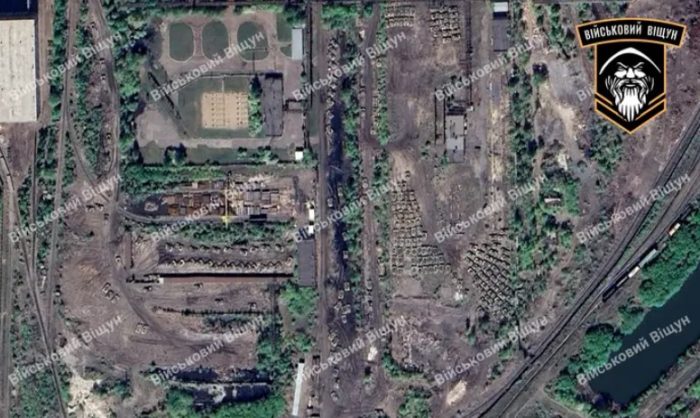
Credit: Viyskovyi Vishchun.
In total, about 400 T-80 tanks were present at the plant’s sites in the spring of 2023, according to the Viyskovyi Vishchun. The same number was recorded in October 2023.
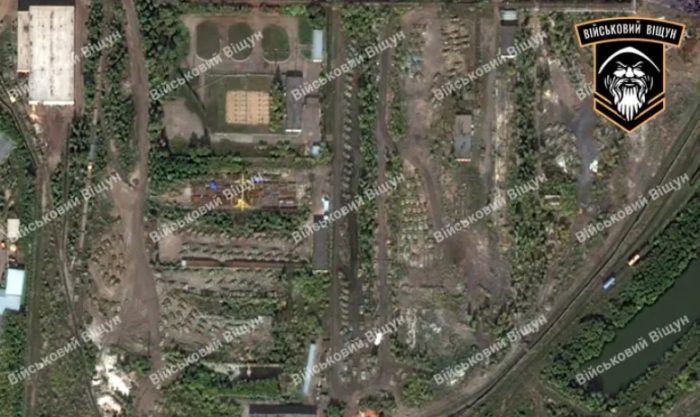
Credit: Viyskovyi Vishchun.
In total, there are about 800 T-80 tanks at Omsktransamash bases and sites as of October 2023, while in 2021, there were around 1160 T-80 tanks at Omsktransmash, according to the Visyskovyi Vishchun. Some tanks are in hangars and cannot be counted. According to the Military Balance, as of 2021, Russia had 1500 T-80 tanks.
As of October 2023, Russia has 800 T-80 tanks, 360 of which have already been decommissioned, according to the Visyskovyi Vishchun. Some of these tanks will be dismantled for spare parts needed to repair other tanks that can be sent to the battlefield.
Russia is ramping up tank production of main battle tanks but lags behind the losses the Russian army sustains on the battlefield in Ukraine. According to the Director of the Ukrainian Center for Army, Conversion and Disarmament Studies, Valentyn Badrak, Russia can produce about 150 new tanks a year.
The production of modern versions of Russian tanks, such as the T-90 Proryv (Breakthrough) main battle tanks, relies heavily on Western-made components that Russia has been illegally importing to circumvent sanctions imposed on its defense industry since the start of the full-scale invasion of Ukraine. The scale of this production can hardly reach the pre-war level.
Thus, the day that Russia runs out of Soviet armored vehicles and tanks could become the day that Russia’s war against Ukraine is suspended. In that case, Russia will have to replenish its losses to be able to launch a new round of invasion. Either way, that day is not coming anytime soon.
Related:




